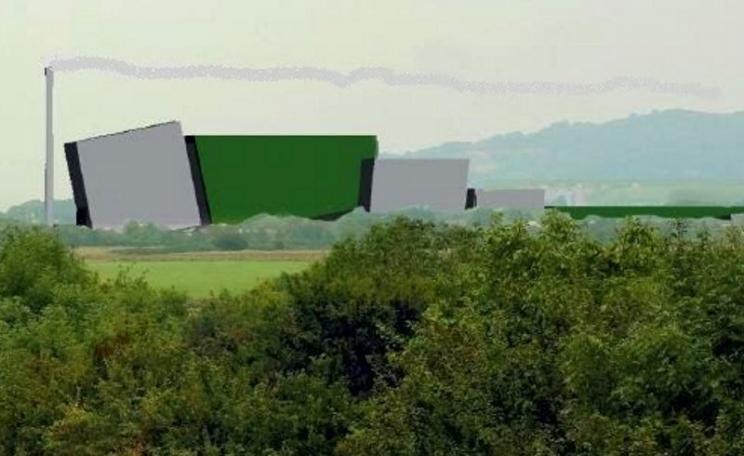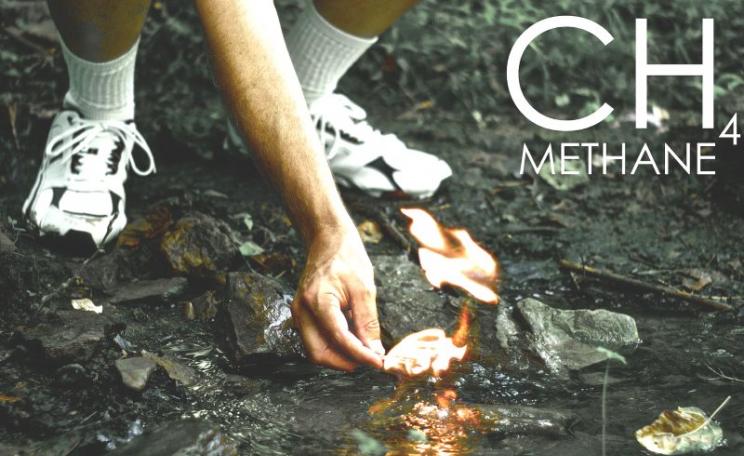The conspiracy of silence between landowners, developers and local authorities, each trying to limit the financial risks of making sites safe, has to end. That must begin with the transparent investigation of all land which is likely to be contaminated.
In the early hours of 8th February 2014 near Chertsey, Surrey, during the floods in the Thames valley, seven year-old Zane Gbangbola was overcome by gas in his bed and died.
His father was paralysed as a result of his exposure. This week, almost two and a half years after the event, the Surrey Coroner will finally deliver a verdict on the case heard this summer.
Remarkably, Zane's parents were denied legal aid to be represented at the hearing, after the Legal Aid Agency ruled that it was "not in the public interest".
Zane's mother Nicole Lawler told the BBC: "We are trying to find £70,000 just to get a death certificate and hopefully from that some recommendations on landfill. We will fight to get Zane a truthful, dignified answer."
The events behind this case go to the heart of the UK government's historic failings to address land contamination, and the hazards it presents to human health and the environment.
Not only does no one in authority wish to admit to the failings of the current system, this case also shows how public authorities will deliberately suppress information to prevent a public outcry over the contaminated land issue.
Next to the Gbangbola's home is Lavenders Pit. Now a lake, it was once a large area of gravel workings and 'wet tip' landfill. As the gravel was extracted, waste was tipped at the lakeside and pushed into the water to fill the void. The tipping started at the north of the site in the late 1950s and went in a clockwise direction, ending near the Gbanbola's home a the end of the 1960s.
At this time waste tipping wasn't tightly regulated and record-keep was almost non-existent. Though there was oversight by local authorities and the public health department, it wasn't strict. When waste licensing under the Control of Pollution Act was introduced in 1977 things improved, but not a lot.
In any case, Lavenders Pit had by then slipped through a loophole out of the waste authority's regulatory gaze.
Untouched, unmonitored, uninvestigated - like hundreds of other sites
In the early 1970s the construction of the M3 motorway cut the site in half. When waste licensing was introduced the half beyond the motorway was ignored. Ever since it has been left largely untouched, unmonitored and uninvestigated.
In November 2014 I was giving a talk in Guildford on the toxic hazards of fracking. Zane's parents attended, and afterwards I talked to them. Their story wasn't a surprise. As I said to them then, I'd been "expecting to meet them for the last twenty years". That's because, back in the mid-1990s, it was obvious that such as case was likely to occur.
The conspiracy of silence between landowners, developers and local authorities, each trying to limit the financial risks of making sites safe, has to end. That must begin with the transparent investigation of all land which is likely to be contaminated.
Their case is a clear example of the failure of the current laws and guidance on contaminated land.
People buying houses near the site were not told of the risks because the local authorities had no information about the risks. In fact, immediately after the events of February 2014, the local authorities denied that it had been a landfill site ... because they had no information about it.
It was a Kafkaesque abdication of their duty of care to the public.
The bigger issue here is that this case, though extreme, is not unexpected due to the treatment of contaminated land by successive governments since the 1970s, when the problem first became apparent.
There are sites like Lavenders Pit across Britain. Not just in the gritty industrial heartlands where you might expect, but also the leafy country areas around the conurbations of London, Manchester, Yorkshire, the Midland Valley in Scotland, and across South Wales.
In 1993, under the new Part 2A of the Environmental Protection Act 1990, the government was about to commence a system of contaminated land investigation, clean-up, and public registers of information - so that the public would know the risks.
It never happened.
Michael Howard: 'Don't ask, don't tell'
Michael Howard, then Secretary of State for Environment, succumbed to pressure from the development industry and scrapped the plans. In the development boom of the early 1990s, the large landowners were worried that the value of their land, and their profits, would be hit if they had to address the legacy of historic land contamination.
Instead Michael Howard introduced a watered-down system where if no one told, and no one 'officially' asked, then the risk simply didn't exist. Without a duty on local authorities to investigate sites and flag-up contaminated land, the onus is on the landowner to disclose the risk - even though it's not in their interest to do so.
That's how Lavenders Pit, and many other sites like it across Britain, fell through the current system. Unless they are about to be built on, and planning permission is applied for, the hazards will not be assessed.
Compared to the 1990s, however, we now face an additional challenge - climate change.
The reason Lavenders Pit suddenly became a toxic problem was that the exceptional floods changed the hydrological regime around the site. This is likely to have pushed the toxic gases trapped in the soil into the Gbangbola's home.
Right now, around low-lying coasts and tidal estuaries there are more than a thousands landfilled areas which could break up, releasing their toxic contents into the environment as flooding and sea-level rise take effect. This risk isn't even considered under the current regulatory regime.
A recent national survey by the Environment Agency, to which less than two-thirds of local authorities responded, found that 11,000 sites had been investigated since 2000. It also found at least 10,000 sites required investigation as a priority, and that there may be 200,000 contaminated sites nationally which require some form of assessment.
The conspiracy of silence must end!
The reason the contaminated land issue refuses to go away, and why the environment and public health are still at risk, is because successive governments have ducked the issue. The land lobby has significant sway in Whitehall. Far more, it would appear, than the lobby to protect public health.
Traditionally it has been new development, particularly the need to use more brownfield sites, which has driven the contaminated land issue. The risks of climate change, affecting sites not subject to redevelopment, has yet to be considered.
Without serious action to identify contaminated land sites across Britain then, as in the case of Zane Gbangbola, at any time the lives and health of the public might be put at risk. As climate change modifies historic patterns of rainfall, river flooding and coastal inundation, it is likely that further instances of contamination, and possibly death from contaminated sites will take place.
The conspiracy of silence between landowners, developers and local authorities, each trying to limit the financial risks of making sites safe, has to end.
That must begin with a change in national guidance to require - as was the case in 1993 before it was scrapped by Michael Howard - the transparent investigation of all land which is likely to be contaminated, whether it is being developed or not.
Paul Mobbs is an environmental and peace campaigner and long-standing contributor to The Ecologist. He runs the Free Range Activism Website (FRAW) and is the author of Energy Beyond Oil and A Practical Guide to Sustainable ICT (which is available free on-line).







